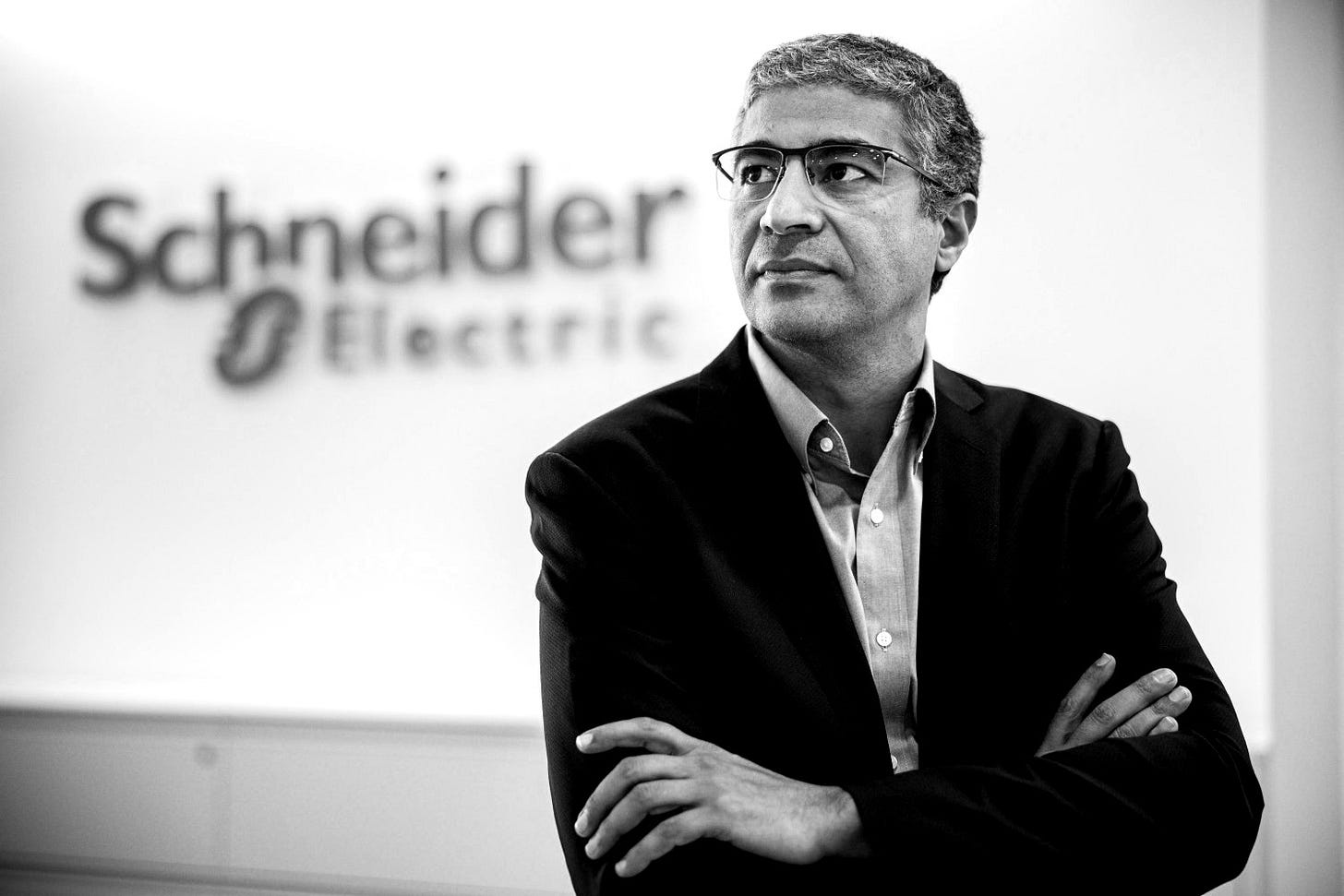How Schneider Electric Is Reinventing Supply Chains for a Greener Future
From Carbon Goals to AI-Driven Logistics: The Inside Story of Schneider Electric’s Supply Chain Transformation
Schneider Electric has quietly built one of the world’s most advanced and sustainable supply chains. Discover how bold leadership, AI tools, and deep supplier engagement are helping this global giant redefine what resilience and responsibility look like in modern logistics.
Schneider Electric, a global leader in energy management and automation, has turned its supply chain into a benchmark for sustainable innovation. With operations in over 100 countries, 160 factories, and 75 distribution centers, managing complexity is a daily task. Yet, Schneider’s supply chain isn't just efficient—it's a vehicle for climate action, digital transformation, and cultural reinvention.
Mourad Tamoud, Chief Supply Chain Officer, says it best:
“Sustainability isn’t an add-on, it’s embedded in every decision and process.”
Let’s break down how Schneider is achieving this across three dimensions: operations, supplier collaboration, and leadership.
Sustainability at the Core of Strategy
Schneider’s supply chain transformation started over a decade ago, with network optimization initiatives dating back to 2012. But in recent years, sustainability has taken center stage. The company’s supply chain strategy now rests on four foundational pillars: people, planet, customers, and performance.
This isn’t just talk. In 2021, Schneider launched its ambitious Zero Carbon Project, committing its top 1,000 suppliers—who represent 70% of upstream emissions—to halve their carbon footprint by 2025. The company supports this goal with tailored training, expert visits, workshops, and a knowledge-sharing community. So far, emissions have already been cut by 40%, with the 50% target well within reach in 2025.
This model of collaborative decarbonization is reshaping industry norms. According to Mourad Tamoud:
“Sustainability is a collective effort. Our suppliers’ progress makes it possible for us to reach our targets.”
AI, Automation, and End-to-End Control
Sustainability doesn’t work without data—and that’s where Schneider is breaking new ground.
To manage operations at scale, the company invested in a proprietary global digital supply chain platform, run by seven control towers staffed with 160 specialists. This system consolidates data from sourcing, logistics, and manufacturing into one real-time dashboard, allowing Schneider to respond to disruptions with agility.
It’s not just dashboards. Schneider has rolled out AI tools to predict demand, benchmark performance, and optimize routes, while laying the foundation for self-adaptive supply chains powered by automation and machine learning.
Tamoud explains:
“We are building a supply chain that can dynamically respond to disruptions. It’s not just resilient—it’s intelligent.”
For example, Schneider’s AI-enabled systems have helped the company navigate component shortages during the pandemic and geopolitical conflicts affecting global trade.
Building the Supply Chain Leaders of Tomorrow
A digital and sustainable supply chain needs more than tools—it needs leadership.
In 2023, Schneider launched its Catalyst Leadership Program, starting with a large-scale skills assessment of over 300 global supply chain leaders. The finding? Too many leaders were still operating in a “command-and-control” mode.
The Catalyst program aims to fix that. It includes deep training in resilience, adaptability, digital fluency, and sustainability, and is expanding rapidly across regions and functions. There’s also the Sustainability Academy, open to all employees, and Leading the Next Frontier, a partnership with HEC Paris designed to strengthen emotional intelligence and innovation leadership.
“Our leaders must know how to articulate our strategy and inspire their teams to believe in it,” says Tamoud.
The focus isn’t only on senior roles. Schneider is also investing in future talent through early-career rotational programs, cross-functional leadership tracks, and a new Sustainability Leadership Program that debuted in 2024.
Other Global Initiatives That Strengthen the Chain
Schneider Electric’s supply chain success isn’t confined to Europe or North America. Around the world, local efforts feed into the global mission:
India: Schneider has transformed its Hyderabad smart factory into a global model for digitization and green manufacturing, integrating IIoT and real-time data analytics to cut downtime and emissions.
China: The company has built one of its largest smart distribution centers in Tianjin, using robotics and AI to optimize e-commerce logistics.
Mexico: Schneider has leveraged regional manufacturing hubs to de-risk global trade shifts, reducing dependencies on single geographies.
Africa & Middle East: A new circular supply chain model is being piloted to extend the life of electrical equipment and recover critical components.
Takeaways
Sustainability can’t be siloed. It must be built into the DNA of supply chain strategy—from procurement to logistics.
AI and real-time data are non-negotiable. Visibility is the foundation of resilience in global operations.
Culture change is a journey. Training leaders to think and act differently is just as important as adopting new tools.
What Do You Think?
How are you balancing sustainability and resilience in your own supply chain?
Have you faced challenges implementing AI or leadership development in your logistics operations?
Drop a comment below. Let’s exchange ideas.



